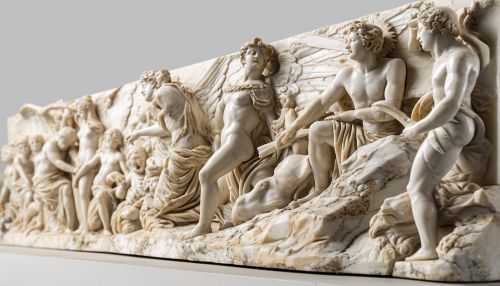Gian Lorenzo Bernini
Early Life
Gian Lorenzo Bernini was born in Naples, Italy, on December 7, 1598, to Angelica Galante and Pietro Bernini. His father, a notable Mannerist sculptor, moved the family to Rome when Bernini was just six years old, exposing the young artist to the city's rich cultural and artistic heritage.
Education and Training
Under the tutelage of his father, Bernini began his training in sculpture at a young age. His talent was evident early on, and he quickly gained recognition for his work. By the age of eight, he was already carving significant works of art. His early works, such as "The Goat Amalthea with the Infant Jupiter and a Faun," show a remarkable understanding of anatomy and movement, as well as a natural ability to convey emotion through sculpture.
Career and Works
Bernini's career spanned over 70 years, during which he created some of the most iconic works of the Baroque period. His sculptures, architecture, and designs for urban spaces helped define the visual language of the era. His works are characterized by their dynamic compositions, dramatic use of light and shadow, and emotional intensity.
Sculptures


Bernini's sculptures are considered some of the most important works of the Baroque period. His ability to carve marble into lifelike figures and scenes was unparalleled. His sculptures, such as "Apollo and Daphne" and "The Rape of Proserpina," are celebrated for their dynamic compositions, intricate details, and the emotional intensity they convey.
Architecture
In addition to his sculptures, Bernini was also a prolific architect. His architectural works, like the Piazza San Pietro and the Baldacchino in St. Peter's Basilica, showcase his ability to create grand, dramatic spaces that inspire awe and reverence. His designs often incorporated his sculptures, creating a cohesive and immersive visual experience.
Urban Design
Bernini's influence extended beyond individual buildings and sculptures to the design of urban spaces. His designs for squares, fountains, and other public spaces helped shape the visual identity of Rome. His most famous urban design is the Piazza San Pietro, a monumental square in front of St. Peter's Basilica.
Legacy and Influence
Bernini's impact on the art world is immeasurable. His innovative approach to sculpture and architecture helped define the Baroque style and influenced generations of artists. His works continue to be studied and admired for their technical mastery and emotional depth.
